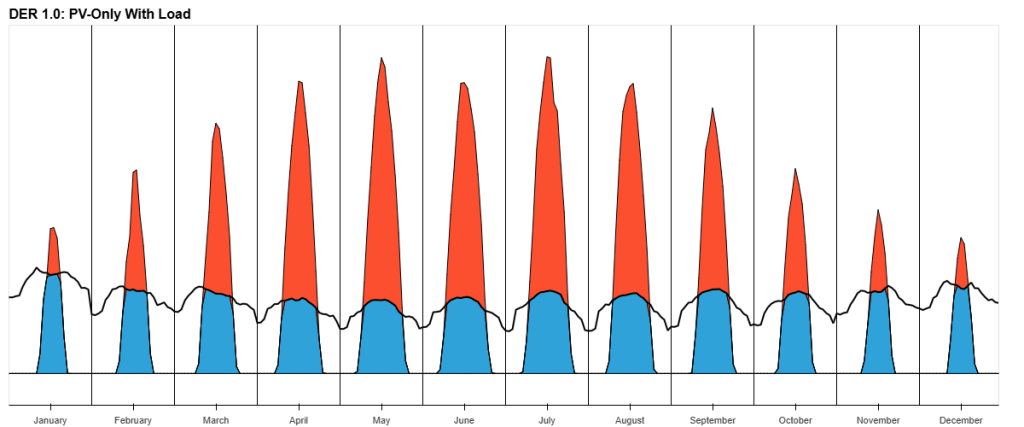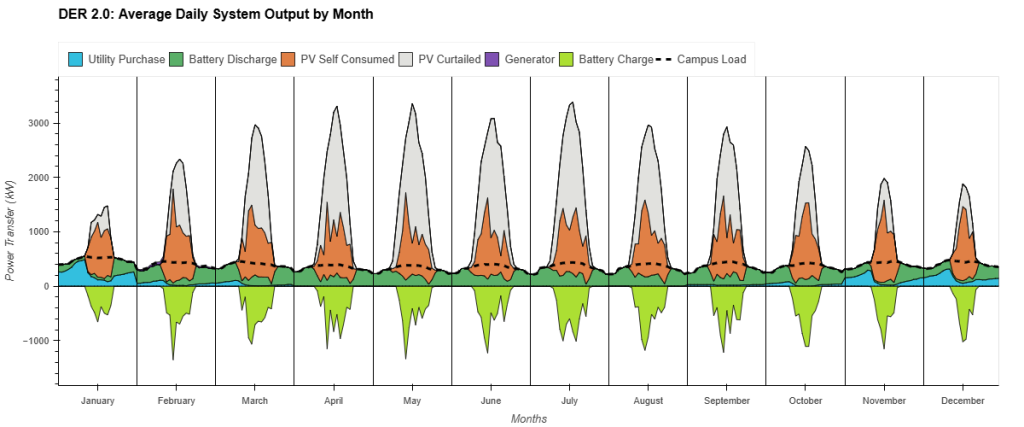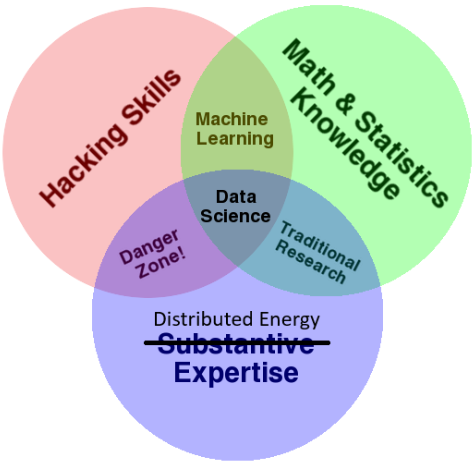Distributed Energy Resources: DER 1.0 Vs DER 2.0
The energy landscape is rapidly changing as we transform the grid to be cleaner, more resilient, and more decentralized power systems. At the heart of this transformation are Distributed Energy Resources (DER), which are evolving in capability and complexity. Understanding the distinction between what we might call “DER 1.0” and “DER 2.0” is crucial for grasping where energy systems are headed and why data science has become an essential tool in this field.
What Are Distributed Energy Resources?
Distributed Energy Resources are electricity-producing or storage technologies that are connected to the distribution grid or behind a customer’s meter. While this term is widely used in the energy industry, it’s not well-known to the general public and can have varying interpretations.
DER 1.0: The First Wave
DER 1.0 represents the first generation of distributed energy resources, predominantly consisting of simple grid-tied photovoltaic (PV) systems. These systems emerged around 2000 and still dominate the existing DER fleet.
Key Characteristics of DER 1.0:
- Basic PV Systems: Primarily behind-the-meter (BTM) or front-of-meter (FTM) solar installations
- Limited Control: DER 1.0 systems have minimal controllability and simply generate when the sun shines
- Grid Export: When generation exceeds onsite load, excess electricity is exported to the grid
- Simple Operation: These systems are designed to disconnect quickly from the grid during disturbances
- Net Metering: Often rely on simplistic regulatory frameworks like net metering
- Low Visibility: The distribution system and its impact on the grid are “hardly visible” to utilities
- Mental Model: PV is perceived as “negative load” that operates stochastically alongside load

Looking at the visual representation of DER 1.0, we see a significant amount of solar generation (indicated by the red area) being exported to the grid when production exceeds the site’s load (the black line). This creates the classic “duck curve” challenge for grid operators, where midday solar production is high but doesn’t align with evening peak demand.
DER 2.0: The Integrated Approach
DER 2.0 represents a fundamental shift in how distributed energy resources operate. Emerging around 2020, these systems represent a “step change” rather than a gradual evolution from DER 1.0.
Key Characteristics of DER 2.0:
- Integrated Systems: Combines PV with battery storage, controllable loads, and smart controls
- Coordination: All elements work together as an orchestrated system
- Self-Consumption: Can operate in modes that prioritize using generated energy onsite
- Grid Interactivity: Capable of providing defined grid benefits
- Visibility: Distribution system is visible to utilities through data exchange
- Advanced Control: Modeled hourly via data science tools with “digitally orchestrated” operation
- Economic Framework: Operates under time and location-based valuation, potentially as Virtual Power Plants
- Resilience: Can provide private benefits like backup power during outages

The visualization of DER 2.0 shows multiple energy flows: PV self-consumption (orange), battery charging (green below the axis), battery discharging (green above the axis), and utility purchases (blue), all coordinated to match the campus load (dotted line). The system can curtail PV (gray) to avoid exports when necessary.
Why the Distinction Matters
Evolving from DER 1.0 to DER 2.0 isn’t merely a technical change—it represents a paradigm shift in how we think about energy systems:
- Value Creation: DER 2.0 creates value both for the owner (through resilience and cost optimization) and for the grid (through controllable resources that support reliability)
- Complexity: While DER 1.0 is relatively simple to understand and deploy, DER 2.0 is “multiple orders of magnitude more complex” requiring sophisticated modeling and control systems
- Data Requirements: DER 2.0 fundamentally requires data science capabilities to optimize operations, whereas DER 1.0 could be deployed without advanced analytics
- Regulatory Frameworks: The transition demands new regulatory approaches that recognize time and location-based value, moving beyond simple net metering
- Mental Model: DER 2.0 forces us to think of these systems as active participants in the grid rather than passive “negative load”
The Role of Data Science
The complexity of DER 2.0 creates a need for interdisciplinary expertise combining:
- DER Subject Matter Expertise: Understanding the technical, regulatory, and economic aspects of energy systems
- Computer Science/Software Development: Creating tools to model and control these systems
- Data Science/Math/Statistics: Analyzing patterns and optimizing operations
These skills ideally need to reside “in the same brain” to effectively navigate the challenges of DER 2.0. This combination allows for the iterative problem-solving necessary for innovation in this field.

Looking Forward
The next decade will be characterized by an ongoing struggle to implement DER 2.0 systems at scale. Though they cost more than their simpler predecessors (largely due to battery components), they likely represent “the most cost-effective, clean, and resilient option we have.”
The grid itself can be viewed as a fractal system with self-repeating patterns across scales, from individual buildings to distribution feeders to substations. DER 2.0 systems at various levels can help optimize this complex network, especially as we move toward greater electrification.
For those interested in working in this field, there’s a major opportunity to apply open-source data tools to DER-related challenges. The learning curve requires familiarity in areas such as:
- Python programming
- Data manipulation tools like Pandas
- Visualization libraries (matplotlib, bokeh, plotly)
- Package management systems like Conda
- Integrated development environments or Jupyter notebooks
While the journey may feel overwhelming and sometimes isolating, the rewards of helping shape a cleaner, more resilient energy future are significant. The intersection of DER expertise and data science represents a frontier where technological innovation, social benefit, and career opportunity align.
Ready to navigate the transition to DER 2.0?
Understanding the difference between DER 1.0 and DER 2.0 is just the first step. Implementing these advanced systems requires specialized expertise at the intersection of energy systems and data science—precisely where ProtoGen excels.
Our team brings together the interdisciplinary skills needed to design, model, and deploy sophisticated DER 2.0 solutions. We’ve helped campuses, municipalities, commercial facilities, and utilities navigate this complex landscape with practical, results-driven approaches.
How we can support your DER 2.0 journey:
System Design & Modeling: Our energy experts use sophisticated data science tools to model optimal configurations tailored to your specific needs and constraints
Techno-Economic Analysis: We identify the most cost-effective solutions that maximize value streams while meeting resilience and sustainability goals
Regulatory Navigation: We help you understand and leverage available incentives, rate structures, and market opportunities
Implementation Support: From specification development to commissioning, we ensure your system operates as designed
The energy transition doesn’t need to feel overwhelming. Whether you’re exploring your first microgrid or looking to optimize an existing DER deployment, ProtoGen offers the technical expertise and practical experience to help you succeed.
Take The Next Step
Contact us today for a consultation to discuss how we can help you implement resilient, intelligent energy solutions that prepare your organization for the future.
ProtoGen: Where Energy Expertise Meets Data Science
